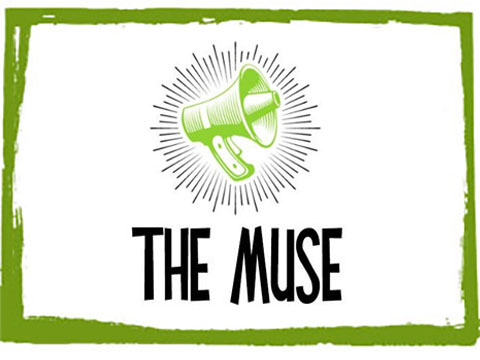
Flat Earth Audio
 1973. David Bowie releases Aladdin Sane and the Flat Earth Audio movement is born. Naim Audio were a key part of a revolution in audio engineering that changed Hi–Fi forever. Founded by the late Julian Vereker, Naim Audio ignited the white heat of British audio innovation. From a small shop in Salisbury over 40 years ago, Julian began a revolution based on the then mystical proposition that amplifiers could actually sound different.
1973. David Bowie releases Aladdin Sane and the Flat Earth Audio movement is born. Naim Audio were a key part of a revolution in audio engineering that changed Hi–Fi forever. Founded by the late Julian Vereker, Naim Audio ignited the white heat of British audio innovation. From a small shop in Salisbury over 40 years ago, Julian began a revolution based on the then mystical proposition that amplifiers could actually sound different.
 The ‘flat–earthers’ of the 1970s, as Naim’s customers became known, were a new audio community more concerned with notes than with measurements, emotion rather than location. Their systems could play in time, maintaining the fundamental structure of the musical performance whilst actually holding a tune. Rather than needing to know exactly where the musicians were standing on the stage, they were more concerned with experiencing the passion that drove them to get up there in the first place. That spirit lives on amongst Naim owners today who have no need to justify their systems using tired ‘Hi–Fi’ criteria. Naim rigs actually groove, connecting on a truly emotional level, offering both vibe and drama—words that real people might actually use to describe real music.
The ‘flat–earthers’ of the 1970s, as Naim’s customers became known, were a new audio community more concerned with notes than with measurements, emotion rather than location. Their systems could play in time, maintaining the fundamental structure of the musical performance whilst actually holding a tune. Rather than needing to know exactly where the musicians were standing on the stage, they were more concerned with experiencing the passion that drove them to get up there in the first place. That spirit lives on amongst Naim owners today who have no need to justify their systems using tired ‘Hi–Fi’ criteria. Naim rigs actually groove, connecting on a truly emotional level, offering both vibe and drama—words that real people might actually use to describe real music.
We have established the Flat Earth Audio Foundation to carry a torch for the ideals of the Flat Earth Audio movement. The principals established by these maverick designers in 1973 are as relevant today as they always were, and we employ them every day when selecting and setting up ideal audio systems for our customers. As well as the material below, we have built the most extensive collection of classic Flat Earth Audio products which you can experience when you visit us.
Chris Frankland, former editor of The Flat Response magazine explains the genesis of the ‘Flat Earth’ audio movement in the 1970’s.
 “These were exciting, ground–breaking and pioneering days in Hi–Fi. Linn and Naim were the first manufacturers to talk about music. How a system has to swing, have rhythm. They talked about their systems only in terms of music – not treble, bass and midrange. To me, and many others, this was obvious and I could wholeheartedly relate to evaluating the performance of a Hi–Fi system by talking about how it performed on actual music, in musical terms. Isn’t the enjoyment of music what it’s all about, after all? This is what I did in my reviews and it was revolutionary.
“These were exciting, ground–breaking and pioneering days in Hi–Fi. Linn and Naim were the first manufacturers to talk about music. How a system has to swing, have rhythm. They talked about their systems only in terms of music – not treble, bass and midrange. To me, and many others, this was obvious and I could wholeheartedly relate to evaluating the performance of a Hi–Fi system by talking about how it performed on actual music, in musical terms. Isn’t the enjoyment of music what it’s all about, after all? This is what I did in my reviews and it was revolutionary.
“To understand it, you have to understand what was happening to the Hi–Fi world back in the late 1970s and early 1980s. I said earlier that these were pioneering, ground–breaking days, and they were. At the forefront of this Hi–Fi revolution were Linn and Naim (but let’s not forget Rega, Nytech, Creek and a few other worthies). And by Linn and Naim, what I really mean is Ivor Tiefenbrun of Linn and Julian Vereker of Naim. Up until this point it is my opinion [and that of manufacturers like those named above] that virtually all Hi–Fi reviewers had written nebulously in terms such as treble, midrange, bass, coloration and soundstage. Therefore their reviews were completely incomprehensible and meaningless to any normal person.

“When Ivor and Julian came along, they talked about music, rhythm, pace, real things in the music that normal people could relate to and hear for themselves in a proper, well–conducted in–store demo. They weren’t having to think if there was enough bass, treble, or whether the coloration was a bit pink, or a bit green. All they needed to know was could they follow the bass guitar? Could they hear what the hi–hat was playing? Could they tap their feet in time to the music?”
‘Purveyors of iconic British Hi-Fi’ | tel: 01727 810047 | email: tunes@tomtomaudio.co.uk
All images © 2020 Tom Tom Audio










